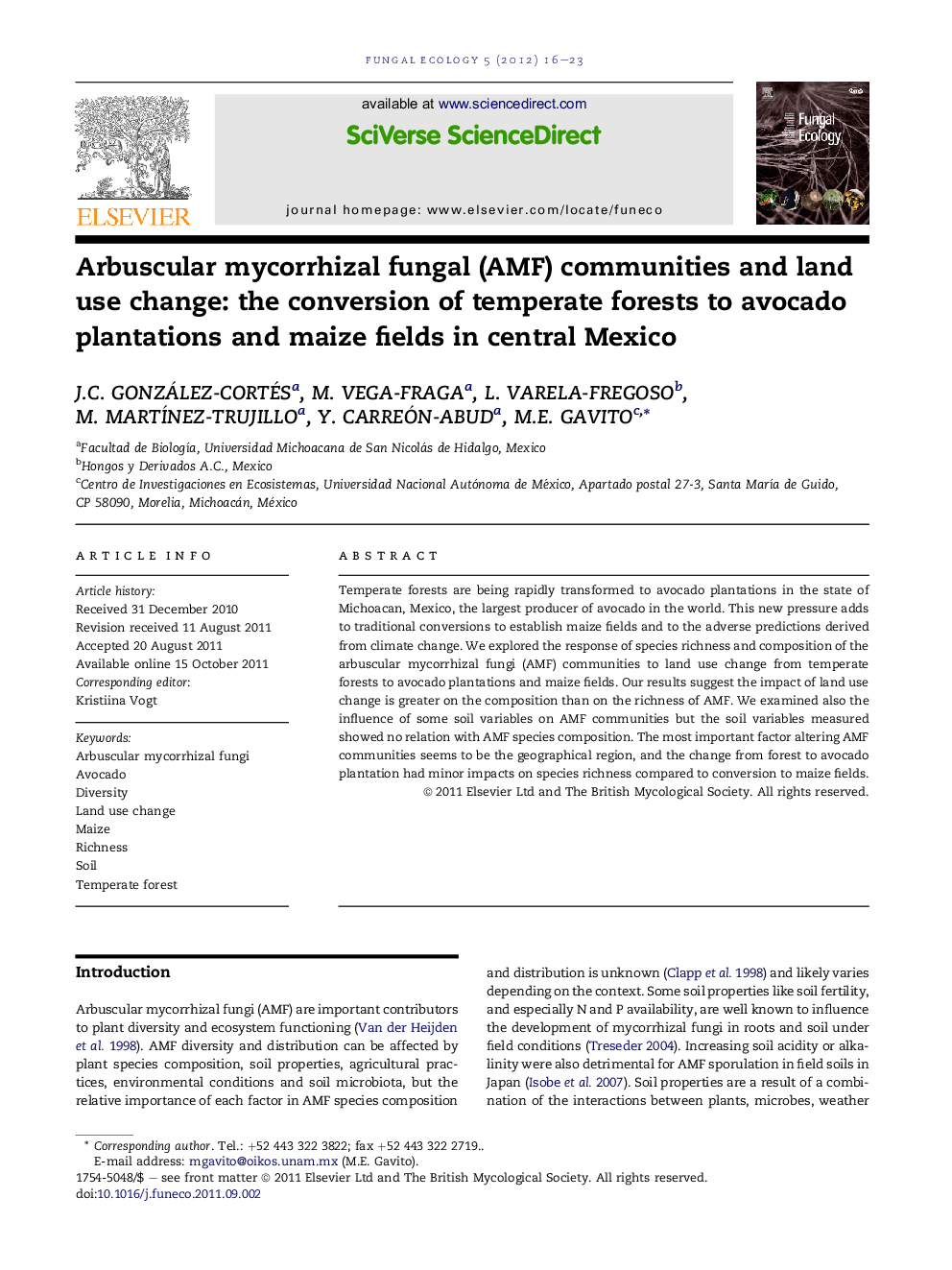| Article ID | Journal | Published Year | Pages | File Type |
|---|---|---|---|---|
| 2053616 | Fungal Ecology | 2012 | 8 Pages |
Temperate forests are being rapidly transformed to avocado plantations in the state of Michoacan, Mexico, the largest producer of avocado in the world. This new pressure adds to traditional conversions to establish maize fields and to the adverse predictions derived from climate change. We explored the response of species richness and composition of the arbuscular mycorrhizal fungi (AMF) communities to land use change from temperate forests to avocado plantations and maize fields. Our results suggest the impact of land use change is greater on the composition than on the richness of AMF. We examined also the influence of some soil variables on AMF communities but the soil variables measured showed no relation with AMF species composition. The most important factor altering AMF communities seems to be the geographical region, and the change from forest to avocado plantation had minor impacts on species richness compared to conversion to maize fields.
► Conversion forest to avocado plantations had minimal effect on AMF communities. ► Conversion forest to maize fields reduced AMF species richness. ► Land use as forest and avocado may preserve more unique AMF species. ► Region was the most important factor defining AMF communities. ► Climatic change may thus have stronger impacts than land use change pressure on AMF.
